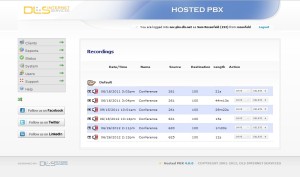In the past I wrote about the enormous complexities facing developers of speech recognition algorithms. These complexities are what keep seemingly promising new technology from reaching us. However, if history taught us anything, it’s that we, humans, are a creative and a relentless bunch and that sooner or later these technical challenges will be succumb to our ingenuity.
 Over the last decade we’ve seen a number of incredible advances in the field of VoIP services and phone systems. From integrated video conferencing technologies to precisely calibrated self-learning algorithms for automated outbound calling and inbound reception, many businesses telephony services bear little more than a passing resemblance to their predecessors from the 20th century- and that’s a good thing!
Over the last decade we’ve seen a number of incredible advances in the field of VoIP services and phone systems. From integrated video conferencing technologies to precisely calibrated self-learning algorithms for automated outbound calling and inbound reception, many businesses telephony services bear little more than a passing resemblance to their predecessors from the 20th century- and that’s a good thing!
Yet, as impressive as these improvements have been over the last 5-10 years, they are nothing compared to the advances we expect to see in coming years.
A Service to Be On the Lookout For
Automated Transcription Service is one advanced feature that many PBX users anticipate to arrive at some point in the future. Such service would open doors to some interesting and perhaps the most controversial options available to PBX owners today: when a phone system integrates this service it could automatically produce a text transcription of every single inbound and outbound phone call moving through your system, store it in a database and provide search and reporting capability a-la Google. For example, one could run a query and search all calls pertaining to a specific subject matter based on search criteria. Wow, that sounds a bit spooky!
The benefits of automated transcription are easy to see:
- Accurate automated transcription, if accepted and adopted, could save operators money, as they may not need to pay for written transcription services.
- Automated transcription will inevitably lead to creation of fully searchable databases of every phone call your callcenter employees make and receive.
- Automated Transcription will also lead to an automated translation service which is also a rapidly maturing technology.
Your Present System
For most organizations, the following scenario will sound familiar:
Right now they simply record the audio of every phone call coming in and/or out of their PBX. These call recordings are stored on a server and are available for instant playback. The process of referencing these audio files, and extracting key information from them, is slow and painful, requiring user to listen to each call.
Imagine one of your callcenter employees answers a call from one of your clients. Your client explains they were promised something on a previous call, such as a rare fee-waiver on their account.
This claim sounds suspicious to your employee, but there is little they can do to check its veracity. If your employee wants to refer back to the call where this promise was purportedly made, they will need to find the call’s recording and then listen to it in its entirety. Neither of these actions can be completed effectively while on the phone with the client, forcing your employee to settle the matter as quickly as possible, often resulting in an unnecessary expense. Of course, there would be an issue of calling customer’s bluff and not losing him in the process but that is an entirely different matter.
Think about the possibilities that an integrated automatic transcription within your PBX system could offer. It doesn’t hurt to dream, right? When a client calls with a support or customer service request, any callcenter employee would be able to perform a quick search through the text archives of that client’s previous calls and pull relevant transcriptions and even fully read through that text file in a fraction of the time it would take to listen to the actual call recording, all without having to put their client on hold.
Clearly many organizations could benefit from automated transcription technology, and the voice recognition technology required to make it a reality is going to continue to evolve in recent years. Current-generation mobile devices such as smartphones and tablets are beginning to incorporate some of the elements of this technology to accelerate mundane tasks such as writing emails and sending text messages, and within the next few years we will likely see more advances.
Automated transcription is bound to have long lasting effects on the way business is conducted over the phone. It is also likely to raise some privacy issues and may not be quickly adopted by everyone. The technology isn’t here yet, as the tasks of caller-independent speech recognition still presents a formidable technological challenge, but I believe that it is coming.